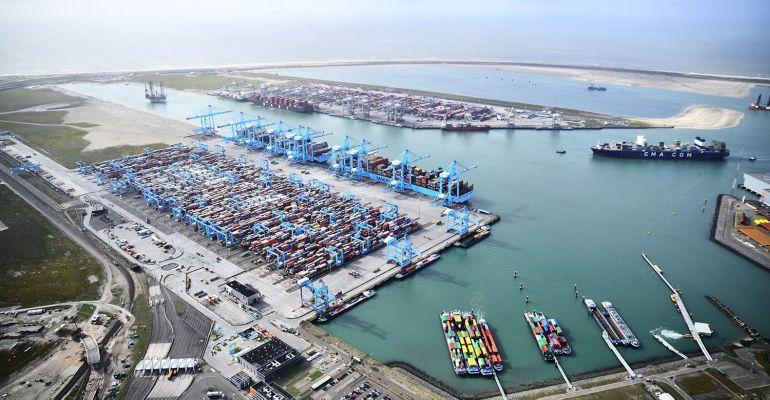Global economic growth forecasts remain on the low side, but regionally the catch up of Asian economies persists with European stagnation seeing its ports slide down the volume table in favour of ports in the Middle East, India and the Far East, where China remains dominant.
Not only do ports and terminals in have to contend with the challenges faced in fast developing countries, but the geopolitical scene is also taking its toll, with both US and European ports affected in the short to medium term.
Eleanor Hadland, senior analyst - ports and terminals at Drewry Shipping Consultants, explains: “In 2023 we saw a wide variation in performance across the regional markets – despite North American volumes dropping steeply (albeit in context of steep rises in 2021/22), Asian markets remained more buoyant.”
World Trade Organization (WTO) reports that world merchandise trade saw a steeper than expected decline of 1.2% last year but it forecasts increases by 2.6% and 3.3% in 2024 and 2025 respectively.
“Import demand in real terms was weak in 2023 in most regions, especially in Europe but also in North America and Asia. The main exceptions were the Middle East and the Commonwealth of Independent States (CIS) region, where imports surged,” said the WTO.
Overall merchandise trade had increased 6.3% by the end of 2023 compared to 2019 figures.
Major US ports also suffered last year with the combined Los Angeles and Long Beach figures showing a 12/6% decline and New York and New Jersey falling 17.7% year-on-year.
Although ports in consumer countries have seen a dip, in developing regions trading rules are still also in transition, as Hadland points out: “There have been major strides to improve trading relationships between Asian countries – lowering tariffs and reducing other barriers to trade. Additionally, diversification of manufacturing outside of China has generated additional intra-Asia flows as supply chains are also becoming intra-regional. Increased consumer power from these markets us also part of the story, but not the whole story.”
In the long term macro-economic growth will come from the Middle East, Asia, Latin America and later Africa, said former transport analyst Mark McVicar, but he argues, “the US economy is doing well, employment is higher and with 2.4% growth it is showing resilience”.
In Europe the economy is suffering from a number of shocks, with ports having lost significant volumes bound for Russia since the start of the Ukraine war two years ago, while the effect of the Red Sea crisis has damaged Mediterranean ports, particularly in the Eastern Med.
As a result Dubai has overtaken Rotterdam, jumping to 10th in the port league table, after it showed some modest growth, 3.6%, but the main reason that Dubai has overtaken Rotterdam is that the Dutch port has seen a 9% decline in volumes since 2019. Hamburg, which was even more reliant on Russian trade has lost over 16% of its throughput in the same period, while Antwerp-Bruges has been stable largely due to the 2022 merger of the two Belgian facilities.
Drewry argues that the North European market is in recovery mode: “The decline in North European volumes was due to challenging macroeconomic conditions, with soaring inflation impacting both the European manufacturing sector and consumer demand,” said Hadland.
She added that the loss of Russian transhipment volumes was still being felt in Q1 2023 but said that Drewry’s “rolling 12-month average growth rate was improving to -1.2% in February 2024, with a further improvement projected for March.”
This has been underscored in Q1 2024 figures with Rotterdam reporting a 2% increase to 3.3 million teu and Port of Antwerp-Bruges reporting a 6% increase to 3.28 million teu compared to the first quarter of 2023.
Maersk and Hapag-Lloyd’s alliance, the Gemini Cooperation, may have a role to play in the shifting fortunes of European terminals. Alphaliner analyst Stefan Verberckmoes noted: “It is indeed surprising to note that Tanger Med is already a larger container port than Hamburg.”
He went on to say: “Some of the largest carriers have invested there as it is a perfect hub on the crossroads of East West and North South services. This month, we saw once again a North Europe – West Africa (the EURAF 5 of CMA CGM) being shortened as calls at Antwerp and Le Havre are removed and the service now turns in Gibraltar Strait.”
With major carriers diverting around the Cape the Eastern Med in particular is being served by feeder vessels from transhipment hubs on the route to North Europe, at the western entrance to the Mediterranean.
Tanger Med has four container terminals and is operated by APM Terminals, Eurogate, and the Tanger Alliance, and handled 8.61 million teu last year, eclipsing Hamburg’s 7.74 million teu, with the German port volumes declining 16.5% and the Moroccan port, strategically situated in the Strait of Gibraltar, increasing 79.4% since 2019.
“Much of the recent growth at Tanger Med relates to the West African market, as this hub port plays a critical role in many carrier networks to service this port range. Additionally, new capacity has been added at the port which has facilitated the impressive growth figures,” said Hadland.
Copyright © 2024. All rights reserved. Seatrade, a trading name of Informa Markets (UK) Limited.
Add Seatrade Maritime News to your Google News feed.  |
